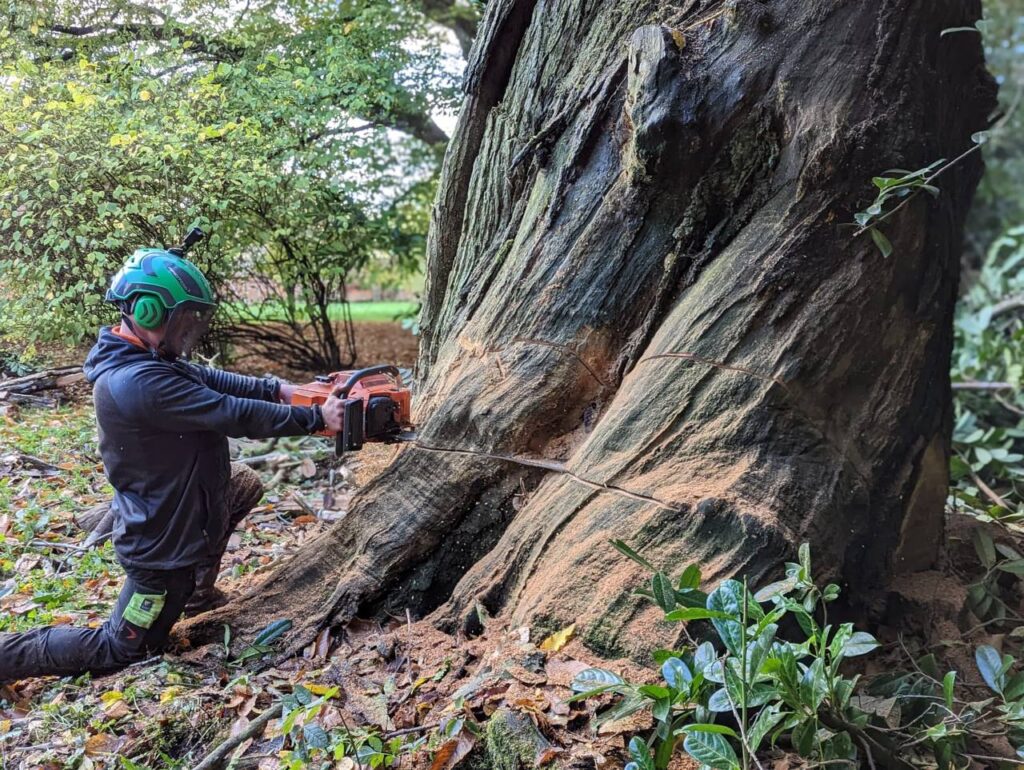Introduction: For homeowners, maintaining the aesthetics and functionality of their yard often involves tree removal. Whether it’s due to disease, storm damage, or just clearing space for new landscaping, the remnants of a felled tree often linger in the form of stubborn stumps. While removing these eyesores can greatly enhance the appeal of your outdoor space, stump grinding isn’t without its hazards. This guide explores essential safety tips to ensure your stump grinding project goes smoothly and safely.
1. Understand the Equipment:
Before diving into any stump grinding project, take the time to familiarise yourself with the equipment. Stump grinders come in various sizes and configurations, but they typically consist of a rotating cutting wheel with carbide teeth that grind away the stump. Familiarise yourself with your grinder’s specific features and functions, and carefully read the manufacturer’s instructions before operation.
2. Wear Personal Protective Equipment (PPE):
Stump grinding can generate flying debris, including wood chips and rocks, which can pose a significant risk to your eyes and face. Always wear appropriate personal protective equipment (PPE), including safety glasses or goggles, a face shield, hearing protection, gloves, and sturdy work boots. Additionally, consider wearing long pants and a long-sleeved shirt to protect your skin from flying debris.
3. Clear the Work Area:
Before starting the stump grinding process, thoroughly clean any obstacles or hazards in the work area. Remove rocks, branches, and other debris around the stump to prevent them from becoming projectiles during grinding. Keep pets and children away from the work area, and establish a safe perimeter to prevent unauthorised access.
4. Assess the Surroundings:
Take the time to assess the surroundings of the stump, including nearby structures, utility lines, and landscaping features. Identify potential hazards or obstacles that could interfere with the grinding process or pose a safety risk. Be especially cautious around underground utility lines, as the grinding process could inadvertently damage them.
5. Operate the Grinder Safely:
When operating the stump grinder, follow all safety precautions outlined in the manufacturer’s instructions. Maintain a firm grip on the machine’s handles, and never attempt to operate it one-handed. Keep bystanders safe from the grinder, and never allow anyone to stand directly behind it while in operation. Take breaks as needed to prevent fatigue, and never operate the grinder under the influence of drugs or alcohol.
6. Use Proper Technique:
Use proper grinding techniques to achieve optimal results and minimise the risk of accidents. Start by positioning the grinder above the stump, then slowly lower it onto the surface to begin grinding. Work systematically, moving the grinder back and forth across the stump until it’s ground down to the desired level. Avoid applying excessive pressure to the grinder, which can cause it to bounce or kick back.
7. Dispose of Debris Safely:
Once the stump has been ground down, safely dispose of the debris to prevent tripping hazards and fire risks. Use a shovel or rake to collect the wood chips, scatter them over the surrounding soil as mulch, or bag them for disposal. Avoid leaving piles of wood chips near flammable materials or structures, as they can pose a fire hazard.
Conclusion: Stump grinding can be a highly effective method for removing unsightly tree stumps from your yard, but it’s important to prioritise safety throughout the process. By following these essential safety tips, homeowners can minimise the risk of accidents and ensure a successful stump grinding project. Remember, when in doubt, it’s always best to consult a professional tree care service to safely and efficiently remove stumps from your property.
Call us on: 01827 214 496
Click here to find out more about Tamworth Trees
Click here to complete our contact form and see how we can help with your tree’s needs.

